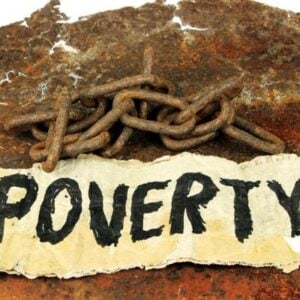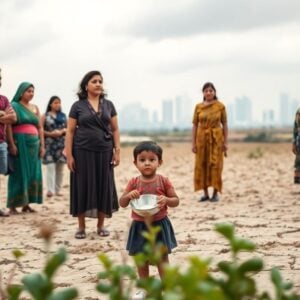The world is facing a stark divergence in wealth as recent reports from Oxfam and the World Bank reveal that billions continue to grapple with poverty, even as the fortunes of the ultra-rich soar to unprecedented levels. Economic recovery since the COVID-19 pandemic has failed to reach the world’s poorest, deepening the gap between the wealthiest and the rest of society.
Key Takeaways
- Global extreme poverty has only just returned to pre-pandemic levels, with 692 million projected to live in extreme poverty in 2024.
- Billionaire wealth surged by $2 trillion in 2024, vastly outpacing economic gains for the rest of the population.
- 44% of the world’s people—or 3.6 billion—continue to live in poverty, with women disproportionately affected.
Global Poverty: Recovery Remains Uneven
Recent data from the World Bank shows that while the total number of people living in extreme poverty—defined as living below $2.15 a day—has fallen slightly to around 692 million in 2024, the decline is minimal compared to pre-pandemic progress. Most gains are unevenly distributed, with low- and middle-income countries bearing the brunt of continued inflation and economic instability.
An analysis of poverty trends highlights that Latin America and the Caribbean were able to offset some hardship with government stimulus, but regions like the Middle East and North Africa faced increased vulnerability due to conflict and economic fragility.
Billionaire Wealth Rises as Most Struggle
Oxfam’s latest report reveals a startling contrast: the combined wealth of the world’s billionaires increased from $13 trillion to $15 trillion in just one year—a figure that equates to $5.7 billion added every day. The number of billionaires rose by 204 in 2024, and forecasts now predict the world could soon count five trillionaires.
- 60% of billionaire wealth now comes from inheritance, cronyism, or monopolistic practices.
- In the UK, billionaire fortunes are driven by concentrated market power and political connections.
- Real estate and rising stock markets are the key drivers behind the past year’s wealth increase.
Widening Inequality and Its Consequences
Even as fortunes accumulate at the top, poverty rates have stagnated and, for some, worsened. Oxfam warns that one in ten women globally live in extreme poverty, illustrating how inequality cuts along gender lines. Meanwhile, the influence of tech moguls and other billionaire elites at forums like Davos casts doubt on economic policies that might address these disparities.
A table illustrating the disproportion:
| Metric | Billionaires | Global Population |
|---|---|---|
| Wealth Growth in 2024 | $2 trillion | Minimal |
| Share living in poverty (2024) | 0% | 44% |
| Primary Sources of Wealth | Inheritance, monopoly, stocks | Wages, informal labor |
Calls For Urgent Policy Reform
Oxfam and other advocacy groups are urging governments to take decisive action. Their recommendations include:
- Implementing higher taxes on the ultra-wealthy.
- Shutting down monopolistic practices that concentrate market power.
- Investing in social services and fairer income distribution.
A recent G20 agreement to address global tax fairness presents new hope, but analysts warn more ambitious policy shifts are needed to challenge entrenched inequality.
Conclusion
As the world recovers from pandemic disruptions, the pace of billionaire wealth accumulation has dramatically outstripped poverty reduction efforts. With nearly half of humanity struggling to get by, experts argue that tackling inequality is central to a more just and resilient global economy.
Further Reading
- Global Extreme Poverty Back to Pre-pandemic Levels: World Bank – SDG Knowledge Hub, SDG Knowledge Hub.
- Billionaire Wealth Soars while Global Poverty Stagnates, Oxfam Report Warns of Growing Inequality, Georgia Today.







